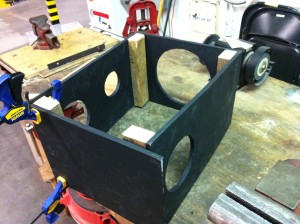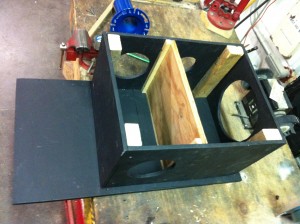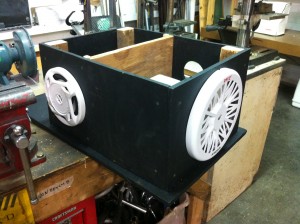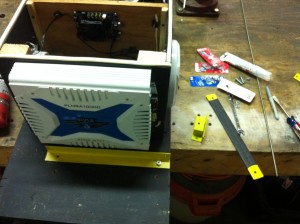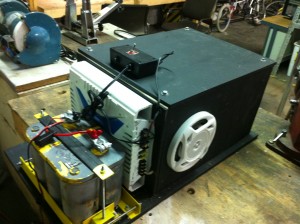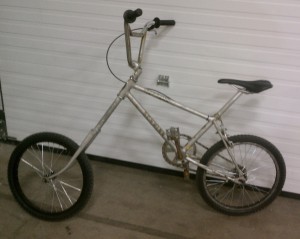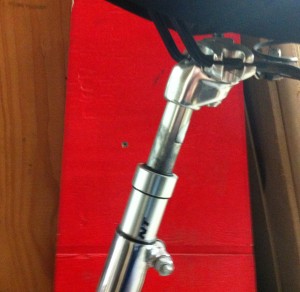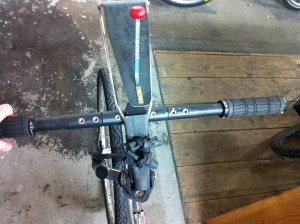Trailer mountable stereo system
Hey yah, so sometimes you want to listen to music with a dozen friends but can’t agree on who gets to haul all the gear. For those times, why not have a sound system that can easily drop into a bike trailer bed?
I started with some plywood and drew circles to mark cutouts for speakers:
Painted it black, then built up the sides with 2x4s:
and made a box:
Once that was done, the next step was to build a simple base out of plywood. An internal divider was installed to separate the subwoofer enclosure from the midrange speaker enclosure:
The subwoofer enclosure is sized for a reasonably flat bass frequency profile. Math!
The midrange speakers installed easily enough:
The subwoofer was straightforward to mount as well:
I used a closet flange and a short length of PVC, painted blue, to make a port. The port will give this subwoofer enclosure a louder bass sound in this relatively small enclosure:
There are two amplifiers in this system. One is a T-class stereo amplifier for the midrange speakers. That’s installed on the inside of the box to keep it away from weather — this drop-in stereo system is designed to work even in rain. The speakers and the second D-class monoblock subwoofer amplifier are all marine grade equipment. Here are both amps installed:
The final step was to devise a mounting system for the marine battery. This was easily the most time consuming aspect of this project. I used steel bedframe (sandblasted and painted yellow), flat steel bar, inner tubes, threaded rod and some fasteners:
The inside of the subwoofer enclosure section was packed with polyfill (pillow stuffing), which keeps the size of the enclosure small without compromising the bass frequency response. A simple electrical/audio bus box was added to tie all the electrical components together. Here’s the completed trailer mountable stereo system:
After the inaugural ride — where it performed admirably — I ended up adding a roll cage around the electrical box to protect it from damage, as well as a tall safety flag for improved visibility.
 Comments(14)
Comments(14)

